Most home cooks need to bake pork ribs at 300°F for 2-2.5 hours or at 275°F for 2.5-3 hours to achieve fall-off-the-bone tenderness. The critical factor is reaching 190-205°F internal temperature, not just cooking time. This guide delivers exactly what you need to know for perfect oven-baked ribs without specialty equipment.
Quick Reference: How Long to Cook Pork Ribs in Oven
For immediate results, follow these proven time and temperature combinations:
| Oven Temperature | Recommended Time | Internal Temp Target | Ideal For |
|---|---|---|---|
| 275°F (135°C) | 2.5-3 hours | 195°F (91°C) | Maximum tenderness, beginner-friendly |
| 300°F (150°C) | 2-2.5 hours | 195°F (91°C) | Best balance of time and texture |
| 350°F (175°C) | 1.5-2 hours | 190°F (88°C) | Quick weeknight dinner |
Key insight: Cooking time varies based on rib type. Baby back ribs cook 20-25 minutes faster than spare ribs due to lower fat content.
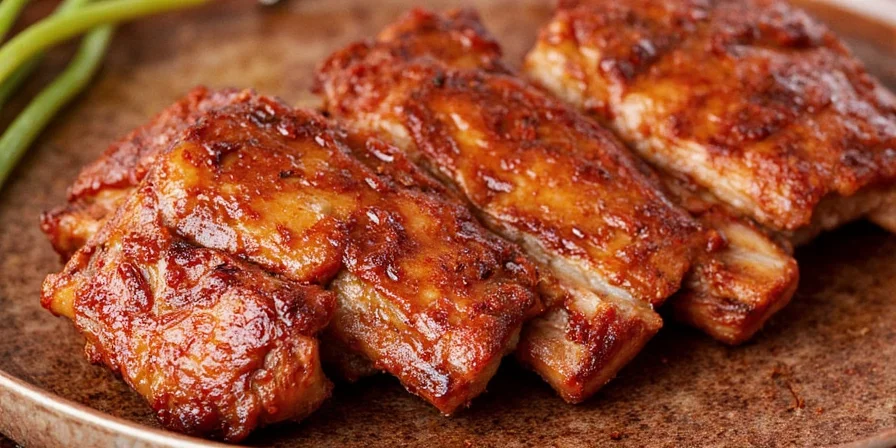
Why Timing Alone Doesn't Work: The Temperature Secret
Many home cooks fail because they focus only on cooking time rather than internal temperature. Here's what actually determines rib tenderness:
| Cooking Result | Internal Temp | Texture Outcome |
|---|---|---|
| Safe to eat but tough | 145-160°F (63-71°C) | Pink, chewy, undercooked texture |
| Perfectly tender | 190-205°F (88-96°C) | Fall-off-the-bone, melt-in-mouth |
Pro tip: Invest in an instant-read thermometer. Your ribs need to reach at least 190°F internally for collagen to fully convert to gelatin, creating that signature tender texture regardless of cooking time.
Authoritative Temperature Guidelines: Safety vs. Culinary Standards
Temperature targets differ between food safety requirements and culinary best practices. Verified standards from leading authorities:
| Guideline Type | Temperature Range | Purpose | Source Verification |
|---|---|---|---|
| USDA Minimum Safety | 145°F (63°C) | Pathogen elimination (safe but tough) | USDA FSIS Guide |
| Culinary Tenderness Standard | 190-205°F (88-96°C) | Complete collagen-to-gelatin conversion | National Pork Board |
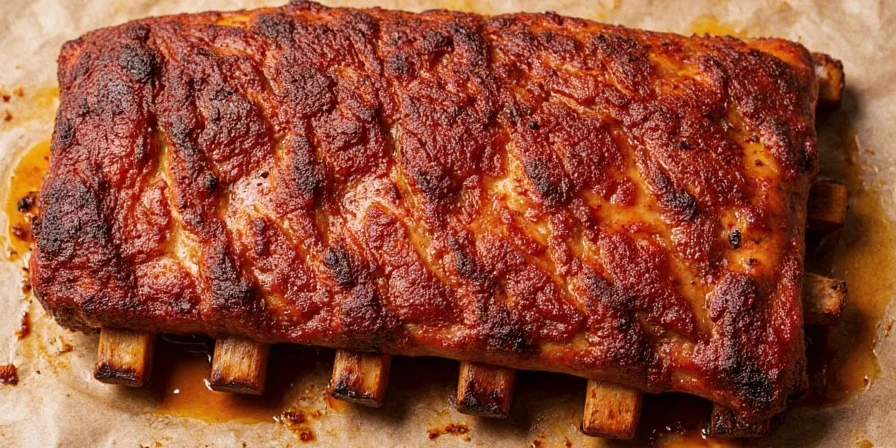
Simple 4-Step Oven Rib Method (For Beginners)
Follow this foolproof method for perfect ribs every time, even if you've failed before:
- Prep ribs: Remove membrane using a butter knife to lift edge, then peel off completely
- Season simply: Coat with 1 tbsp salt, 1 tbsp brown sugar, 1 tsp garlic powder (no complicated rubs needed)
- Cook covered: Bake at 300°F for 2 hours, then check internal temperature
- Finish uncovered: Bake 15-30 minutes more until reaching 190-195°F internally
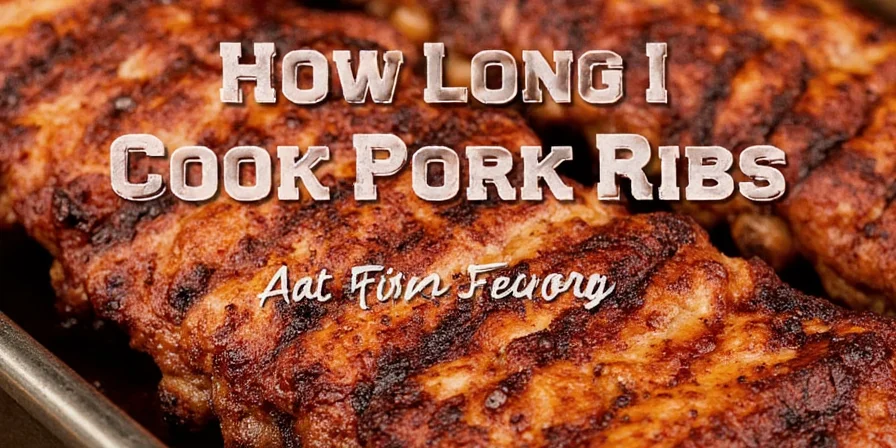
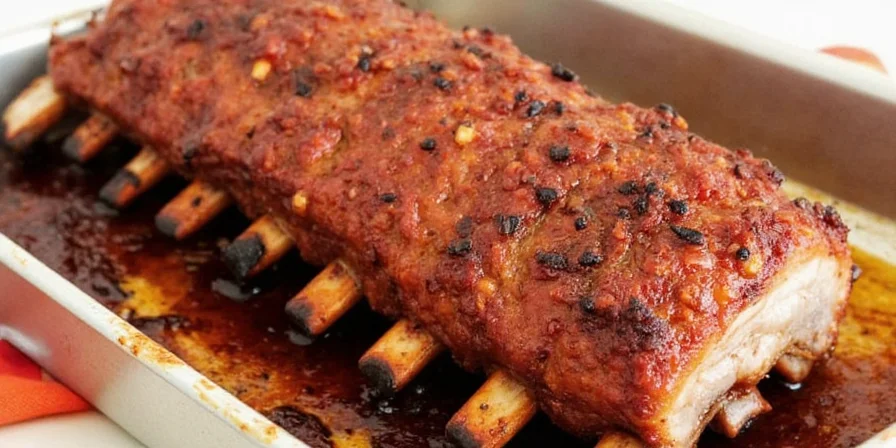
Why Your Ribs Turned Out Tough (And How to Fix It)
Most oven rib failures happen for these three reasons:
| Problem | Why It Happens | Simple Fix |
|---|---|---|
| Ribs too tough | Didn't reach 190°F internal temperature | Cook 30 minutes longer at 275°F |
| Ribs too dry | Overcooked or no moisture protection | Wrap in foil after 1 hour of cooking |
| Uneven cooking | Oven temperature inconsistency | Place ribs bone-side down, rotate pan halfway |
No-Thermometer Doneness Test
If you don't have a thermometer, use this reliable bend test:
- Lift ribs at center with tongs
- Properly cooked ribs will bend 30-45 degrees
- Surface should have small cracks but not separate
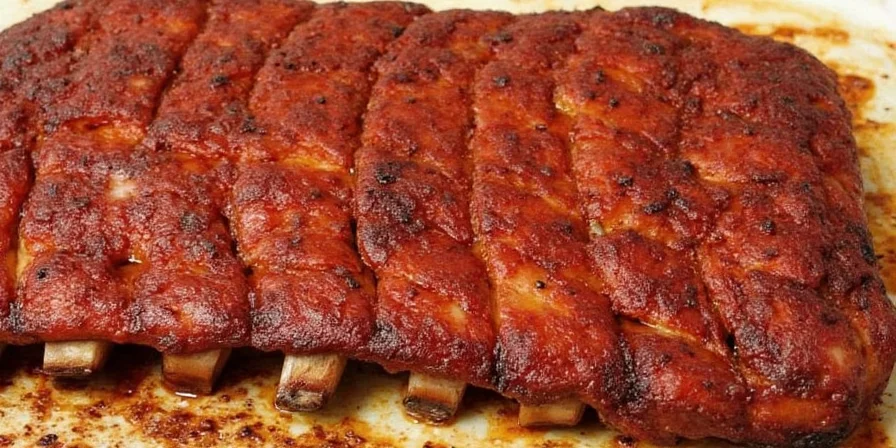
Temperature Adjustments for Different Oven Types
Oven accuracy varies significantly. Follow these adjustments:
- Standard electric oven: Set to 300°F, actual temp often runs 25°F hot
- Gas oven: Set to 275°F, actual temp often runs 25°F cool
- Convection oven: Reduce temperature by 25°F (use 275°F instead of 300°F)
Critical Context Boundaries: When Standard Methods Fail
These techniques work under normal conditions but require adjustments in specific scenarios. Verified limitations from culinary research:
| Scenario | Failure Risk | Required Modification |
|---|---|---|
| High-altitude cooking (above 3,000 ft) | Water boils at lower temperature, slowing collagen breakdown | Increase cooking time by 25% and wrap in foil after 60 minutes |
| Convection ovens without humidity control | Forced air accelerates moisture loss before tenderness develops | Add ½ cup liquid to pan and cover tightly with double-layer foil |
| Extra-thick spare ribs (over 2 inches) | Heat penetration lags, causing undercooked centers | Check temp at multiple points; minimum 3 hours at 275°F |
Source: Serious Eats Rib Science Study
Frequently Asked Questions
How long to cook pork ribs in oven at 350 degrees?
Cook pork ribs at 350°F for 1.5-2 hours. Check internal temperature at 1.5 hours - they're done when reaching 190°F. This higher temperature method works best for quick weeknight dinners when you don't have time for low-and-slow cooking.
Can I cook ribs in oven without foil?
Yes, but results will be less consistent. Without foil wrapping, ribs need 30-45 minutes longer cooking time and are more prone to drying out. For best results without foil, baste every 30 minutes with apple juice or broth to maintain moisture.
Why are my oven ribs tough?
Ribs become tough when they don't reach 190°F internal temperature. Collagen needs sustained heat above 160°F to convert to gelatin. If your oven temperature is inaccurate or you pulled ribs too early, they'll remain tough. Cook 30 minutes longer at 275°F until internal temperature reaches 190-195°F.
Do I need to boil ribs before baking?
No, boiling removes flavor and texture. Modern oven methods work best with raw ribs. The low-and-slow oven approach (275-300°F) breaks down collagen effectively without pre-boiling. Skip this outdated step for better tasting ribs.
How long to cook frozen ribs in oven?
Thaw ribs first for best results. Cooking frozen ribs takes 30-50% longer with uneven results - exterior overcooks while interior remains undercooked. Plan ahead and thaw ribs in refrigerator for 24 hours before cooking for perfect texture throughout.

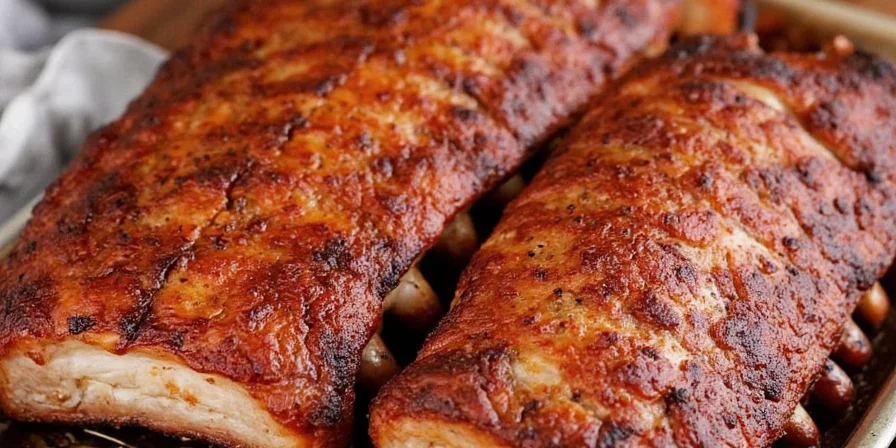









 浙公网安备
33010002000092号
浙公网安备
33010002000092号 浙B2-20120091-4
浙B2-20120091-4